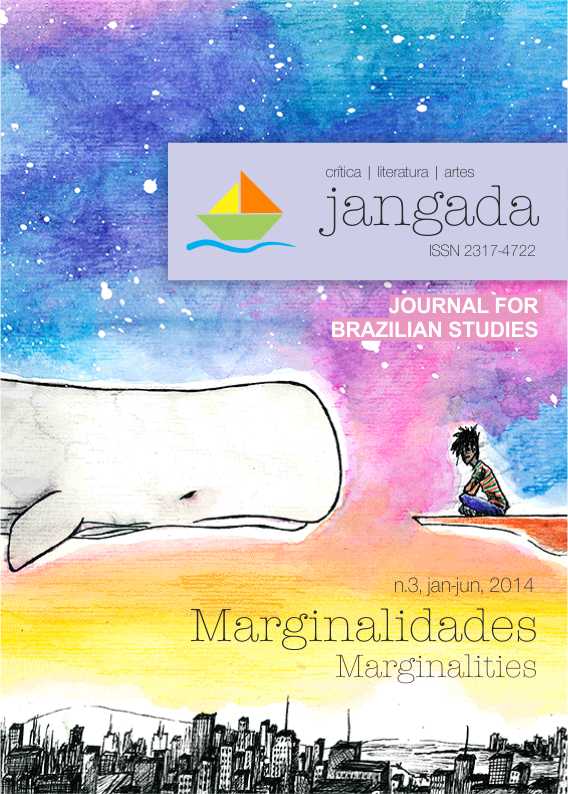Montechios, Capuletos e nós: quando a adaptação expande a noção de comunidade
DOI :
https://doi.org/10.35921/jangada.v0i3.28Mots-clés :
Shakespeare, Comunidade, Violência, AdaptaçãoRésumé
Descreve-se uma iniciativa pedagógica brasileira que não poderia passar desapercebida: estudantes de nível médio de uma área de vulnerabilidade social do
Morro do Cruzeiro, RJ, decidiu formar um grupo de teatro ensaiando na laje de suas casas inacabadas, sem qualquer recurso financeiro. Assim surgiu a trupe teatral “Teatro da Laje”. Com a ajuda do professor de teatro Antônio Veríssimo Santos Jr., o Morro do Cruzeiro começou a se tornar conhecido não pela violência e o tráfico de drogas, mas por esta iniciativa educativa e cultural. O objetivo deste artigo, assim, é discutir as articulações e as estratégias que a adaptação de uma peça canônica, Romeu e Julieta, impinge sobre o potencial de transformação social em uma comunidade em situação de vulnerabilidade social e marginalizada, além de refletir sobre o conceito de "comunidade".
Palavras-chave: Shakespeare, comunidade, violência, adaptação.
____________________________
It is described a Brazilian educational initiative that could not go unnoticed: high school students from an area of social vulnerability of Morro do Cruzeiro, RJ decided to form a theater group rehearsing in the slab of their unfinished homes without any financial resources. So the theatrical troupe "Theatre of Stone" emerged. With the help of the acting tutor, Anthony Verissimo Santos Jr., Morro do Cruzeiro began to become known not by violence and drug trafficking, but for this educational and cultural initiative. The purpose of this article therefore is to discuss the articulations and the strategies of the adaptation of a canonical play, Romeo and Juliet, which influences the potential for social transformation in a socially marginalized and vulnerable community, as well as reflecting on the concept of "community."
Keywords: Shakespeare, community, violence, adaptation.
Téléchargements
Références
BROOK, Peter. The shifting point: forty years of theatrical exploration, 1946-1987. London: Methuen, 1988.
COMPAGNON, Antoine. O trabalho da citação. Belo Horizonte: Ed. UFMG, 1996.
FREIRE, Paulo. Pedagogia da autonomia: saberes necessários à prática educativa. São Paulo: Paz e Terra, 1996.
HUTCHEON, Linda. A theory of adaptation. London & New York: Routledge, 2006.
KIDNIE, Margaret. Shakespeare and the problem of adaptation. New York: Routledge, 2009.
KRISTEVA, Julia. “The bounded text”. In.: Desire in language: a semiotic approach to literature and art. Trans. Thomas Gora, Alice Jardine, and Leon S. Roudiez (ed.). Oxford: Blackwell, 1980.
MASSAI, Sonia. Defining local Shakespeares. In: _____. (Ed.) World-wide Shakespeares: local appropriations in film and performances. London and New York: Routledge, 2005. .pp. 3-12.
RICH, Adrienne. When we dead awaken: writing as re-vision. In: ____. On lies, secrets, and silence. New York: Norton, 1979. pp. 33-49.
SANDERS, Julie. Adaptation and appropriation. London & New York: Routledge, 2006.
SANTOS JR., Antonio Veríssimo. Shakespeare e a Reinvenção da Escola ou a Escola e a Reinvenção de Shakespeare. 2004. 130f. Dissertação (Mestrado em Educação) – Faculdade de Educação, Universidade Federal Fluminense, Niterói, 2004.








